Visitors can see as many as 20,200 relics that were found on a ship sunk some 650 years ago off the beaches near Sinan-gun County in Jeollanam-do Province. The “Discoveries from the Sinan Shipwreck” exhibit will run at the National Museum of Korea from July 26 to Sept. 4.
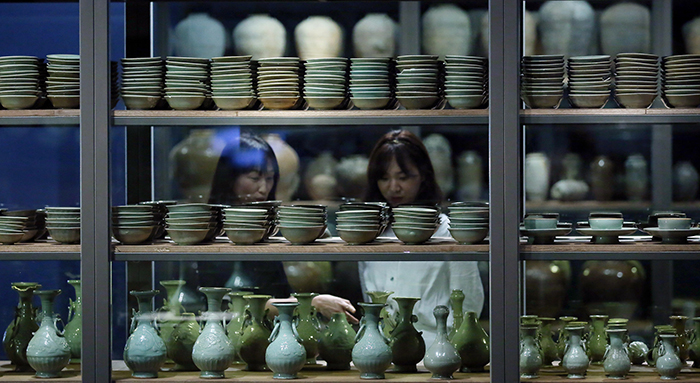
Visitors to the special exhibit ‘Discoveries From the Sinan Shipwreck’ can see as many as 20,200 remains that have been found in a sunk merchant vessel near the coast of Sinan-gun County from the 14th century.
This vessel, dubbed the Sinan ship, was originally a merchant vessel that departed from Qingryuan (慶元), today’s Ningbo in Zhejiang Province, China, on its way to Hakata, Japan, in 1323 during the Yuan Dynasty (1271-1368). It was loaded with a vast number of items to trade. The ship was so big that it was 34 meters in length, 11 meters wide, 3.7 meters high and is expected to have weighed around 200 tons.
In August 1975 the ship first came under the media spotlight when a fisherman happened upon six celadon porcelain works, including a flower-decorated vase, that he caught in his fishing net. His sibling, who was an elementary school teacher, was later able to report the finding to the Sinan-gun County Office. It turned out that all of the works of porcelain had been made in the kilns of Longquan (龍泉) during China’s Yuan era. Thanks to the nine-year excavation that took place from 1976 to 1984, approximately 24,000 artifacts and 28 tons of coins were unearthed. The Sinan ship became Korea’s first modern underwater excavation.
The exhibit is composed of three parts. The first part, “Cultural Signs and Symbols of the Sinan Shipwreck,” shows Chinese artifacts that resemble the shapes of bronze tableware and ritual ware from the Northern Song era (北宋) (960–1127). People of the time preferred to use ancient bronze-shaped vessels. In this first part, you can also see various relics that were used to drink tea, burn incense, and arrange flowers, as these were hobbies enjoyed by aristocrats in China and Japan.
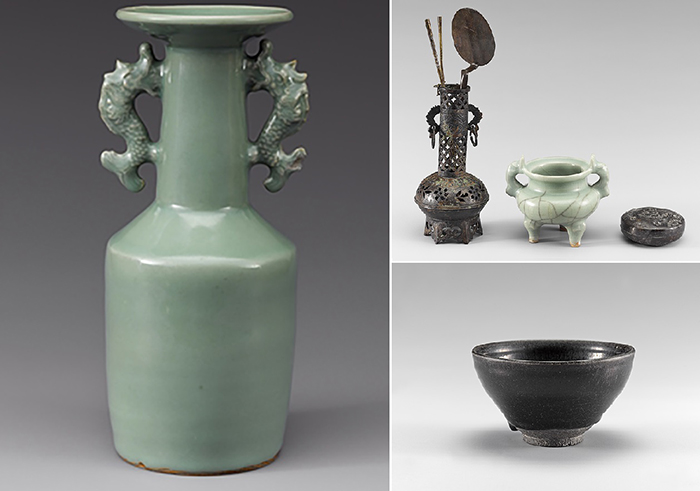
(From left, clockwise) A celadon vase with two handles, tools for burning incense and a black tea bowl. The upper class peoples in China and Japan enjoyed drinking tea, burning incense and arranging flowers. Reflecting these tastes, items related to tea, incense and flowers were considered important trade items during the 1300s across East Asia.
The exhibition also shows some of the daily utensils used by the people who boarded the ship, and various trade items loaded onto the ship, such as porcelain works, pieces of red sandalwood used to make Buddhist statues and furniture, coins, lacquerware, and glasses. These are all visible in the second and third parts of the exhibit, “Magnificent Merchant Vessel of the Fourteenth Century” and “The Treasure House is Now Open.”
One of the most noticeable things in these final two exhibit sections is the wooden tablets written with a record of the items loaded on board. These records include the year the ship departed, the owner of the merchandise, and the quantity and type of merchandise. These wooden tablets tell us that it took about 40 days to load the items on board in 1323, and that they finished loading the items early in the sixth month of the lunar calendar, and then departed Ningbo for Hakata.
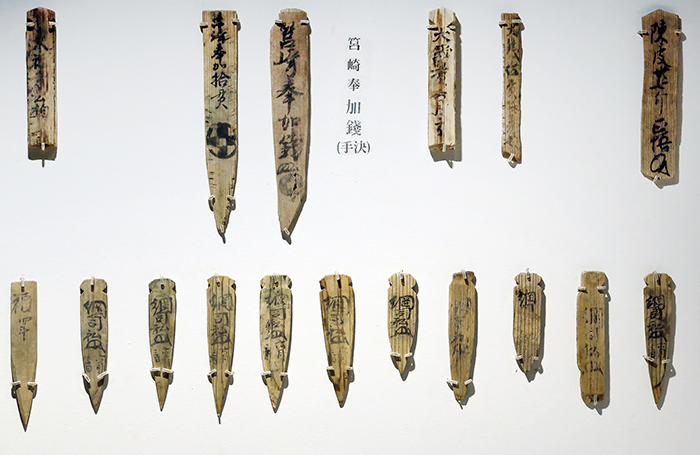
Wooden tablets are found alongside the merchandise onboard the Sinan ship. These records show how many days it took to load the ship, its departure date and its destination.
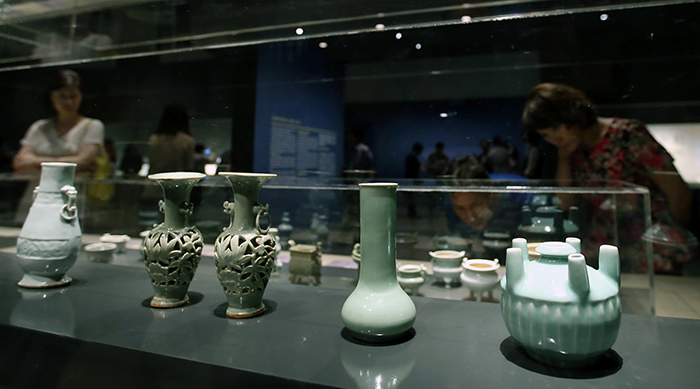
Porcelain was one of the major trade items onboard the Sinan ship. Porcelain items loaded on the ship included works from Zhejiang, Jiangsu, Guangdong and Hebei provinces in China, as well as Goryeo celadon porcelain.
The merchandise loaded onto the ship also included seven Goryeo celadon porcelain items, such as a celadon headrest with a crane design and a celadon lion-shaped water dropper. Other artifacts discovered on the ship include a piece of red sandalwood written with Arabian numbers, glass marbles and hairpins. The ship also had various daily utensils that show that its passengers were probably from different countries, such as ancient China and ancient Japan, and even included Buddhist monks, as some Japanese chess board and chess pieces, a pair of geta, traditional Japanese footwear, religious utensils and spices were also found onboard. All of these show how wide trade routes were in East Asia of the 1300s.
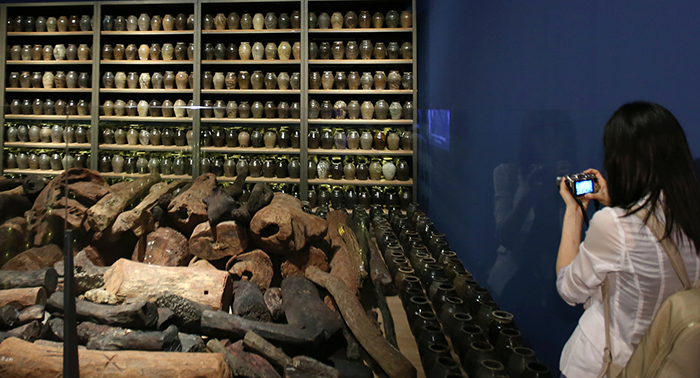
Museum-goers look at pieces of red sandalwood and works of porcelain, all part of the items loaded onboard the Sinan ship.
Director General Yi Young-Hoon of the National Museum of Korea said at the opening ceremony for the exhibit on July 25 that, “To mark the 40th anniversary of the discovery of the Sinan ship, this exhibit is designed so that visitors can truly feel the scale of the ship by showing as many as 20,200 artifacts all on display at the same time. This is so far the largest special exhibition ever held at this museum.”
“I hope this exhibit can contribute to research into the history of cultural and economic exchanges across East Asia,” he concluded.
By Yoon Sojung
Korea.net Staff Writer
Photos: Jeon Han, Korea.net Photographer, National Museum of Korea
arete@korea.kr
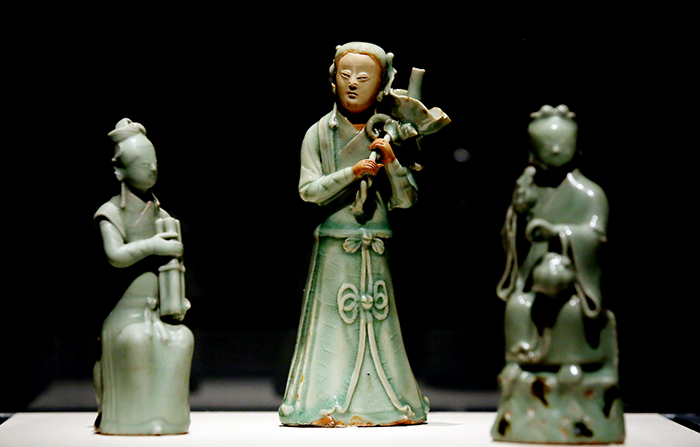
Celadon figures of women and Taoist figures are from the Yuan Dynasty in the late 13th to early 14th century. These are some of the rare findings onboard the Sinan ship that cannot be found anywhere else in the world. The figure in the center is characterized by its human-shaped face that looks more natural for not having any glaze applied to its surface.
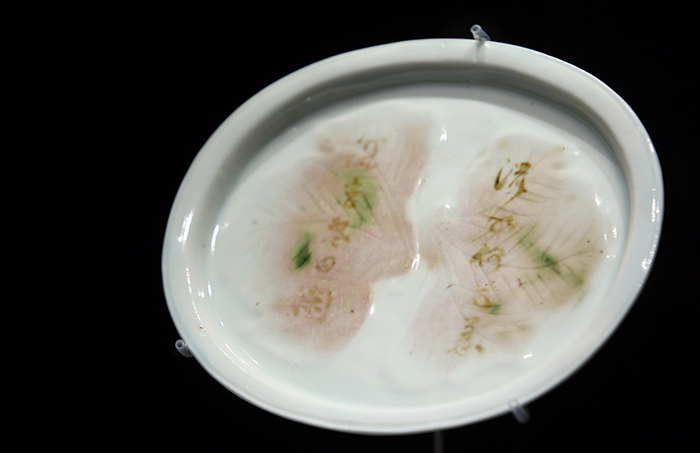
A porcelain dish with a couplet poem is also one of the main artifacts from the Sian ship. The poem is originally written by a court lady from the Tang Dynasty.
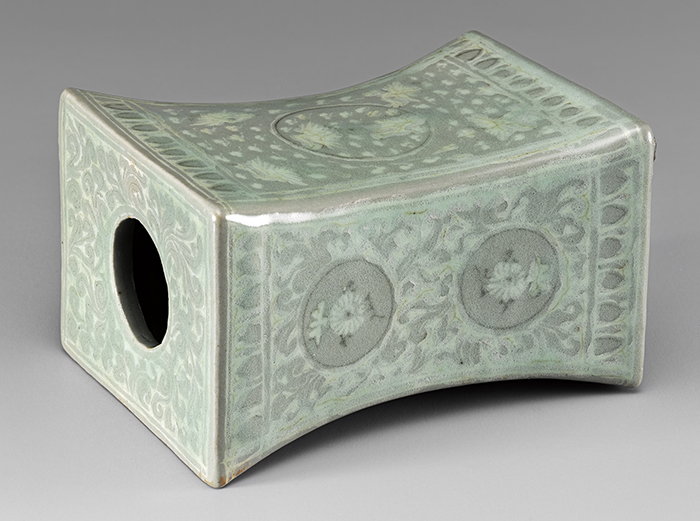
A celadon headrest with a crane design is one of the seven items of Goryeo celadon that are found onboard the sunken Sinan ship.
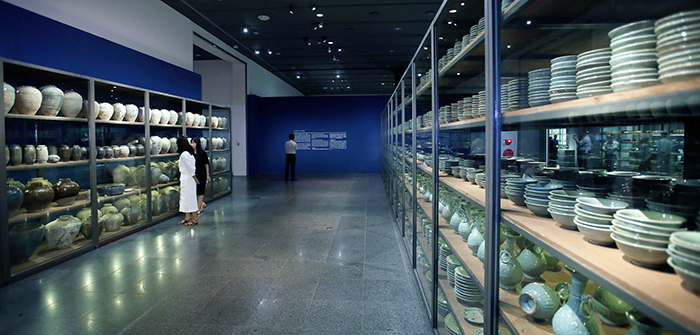
In order to mark the 40th anniversary of the finding, the ‘Discoveries From the Sinan Shipwreck’ exhibit is designed to show as many as 20,200 artifacts from the ship in one place at one time. This is so far the largest single special exhibit ever held at the National Museum of Korea.
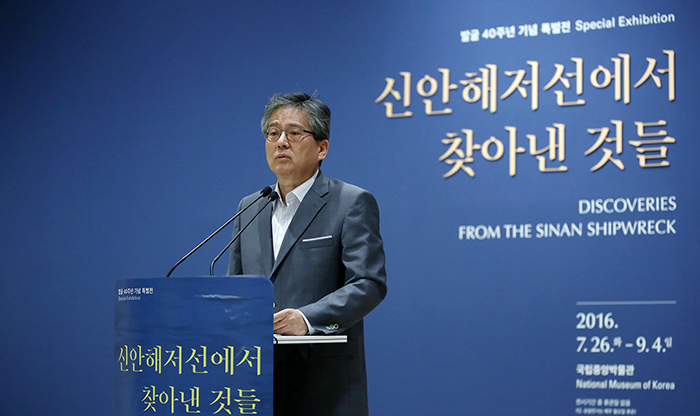
Director General Yi Young-Hoon of the National Museum of Korea emphasizes the meaning and scale of the new exhibit in his speech during the opening ceremony on July 25.
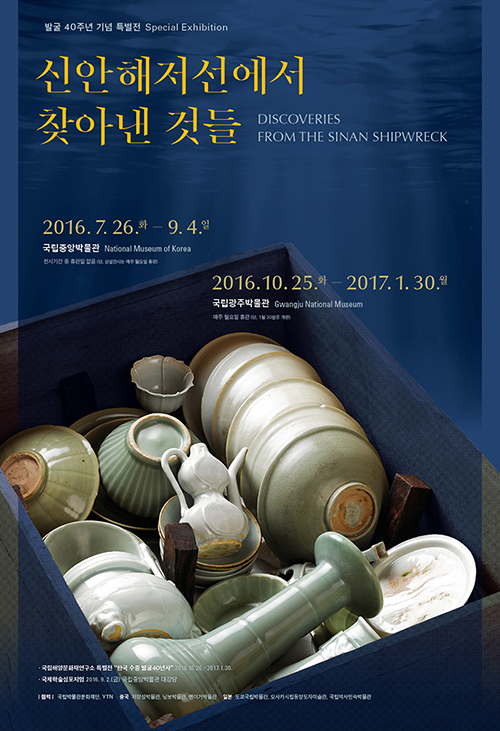
Poster for the ‘Discoveries from the Sinan Shipwreck’ exhibit.